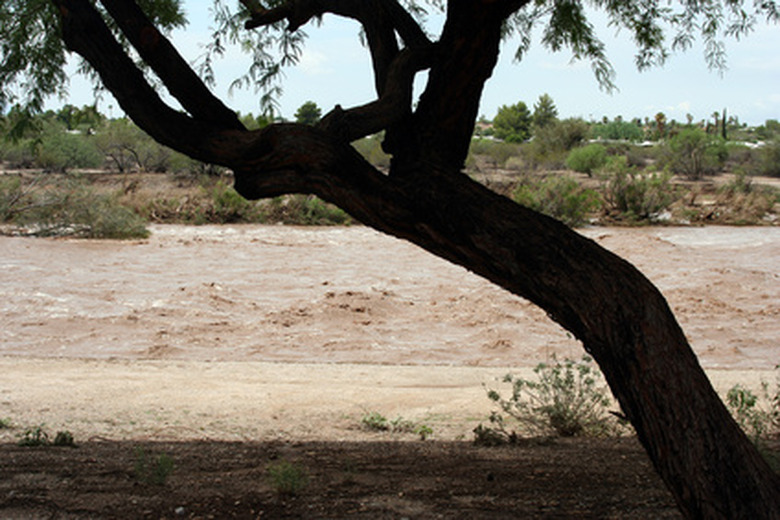Desert Willow Diseases
The desert willow is a North American native that thrives in dry, hot areas. This multi-trunked tree is extremely drought-tolerant and can reach heights up to 25 feet, with an equal spread. The tree develops a round crown with simple, dark green foliage. Its fragrant, showy blooms range in color from whites to lavenders. This hardy tree is resistant to most major diseases, but is susceptible to several minor fungal diseases.
Alternaria Leaf Blight
Alternaria leaf blight infects the foliage and stems of the desert willow. This blight disease germinates during periods of moist, wet weather. The microscopic fungal spores are transported by wind and rain onto the tree. The infected foliage of the desert willow develops small, water-soaked spots that turn reddish-brown with age. Progression of the disease causes an increase of spots, which eventually cause necrosis, foliage death and defoliation. Alternaria leaf blight is easily controlled by eliminating excessive moisture on foliage. Copper and chlorothalonil-based fungicide treatments are effective in treating this disease.
- The desert willow is a North American native that thrives in dry, hot areas.
- Progression of the disease causes an increase of spots, which eventually cause necrosis, foliage death and defoliation.
Powdery Mildew
Powdery mildew is a foliage disease that begins as a cosmetic infection. During periods of warm, wet weather, these microscopic fungal spores settle on the foliage of the desert willow. Infected foliage develops small, white spots. As these fungal spots begin to accumulate, they coalesce into a powdery white mildew that covers the surface of the leaves. Severely infected foliage develops brown spots and eventually dies. Heavy defoliation may also occur. Fungicidal treatments are effective in controlling and eliminating this disease.
- Powdery mildew is a foliage disease that begins as a cosmetic infection.
- Severely infected foliage develops brown spots and eventually dies.
Phytophthora Root Rot
Root rot is a damaging disease that infects the desert willow if it is subjected to periods of standing water. This soil-borne fungal disease destroys the fine, fibrous roots of the tree. As a result, the infected roots are unable to provide nutrients and water to the rest of the tree. Infected desert willow trees will display dieback, growth stunt, wilted and browning foliage and drooping. Symptoms also mirror iron deficiencies. Phytophthora root rot is easily avoided when the desert willow is kept in a well-drained location. Fungicidal treatments are available to control the disease.
- Root rot is a damaging disease that infects the desert willow if it is subjected to periods of standing water.
